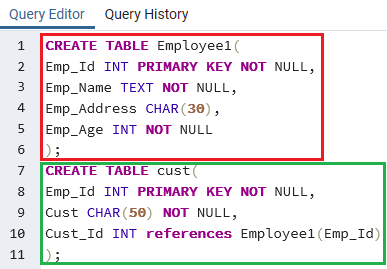

PostgreSQL UNIQUE constraint on group of columns as table constraintsĬONSTRAINT unq_ordno_itname UNIQUE(ord_no,item_name) The above example shows, the table orders have created with unique constraints on ord_no column as table constraints. PostgreSQL UNIQUE constraint as table constraints The above example shows, the table orders have created with two unique constraints on two different columns with two users define constraint names and these two constraints stored in the data dictionary also have shown. Item_name character(35) CONSTRAINT unq_it_name UNIQUE, Ord_no integer CONSTRAINT unq_ord_no UNIQUE, PostgreSQL UNIQUE constraint with constraint name The above example shows, the table orders have created with two unique constraints on two different columns with default constraint name and these two constraints stored in the data dictionary also have shown. PostgreSQL UNIQUE constraint group of columns

The above example shows, the table orders have created in which the ord_no column is unique, can not contain any duplicate values. The table structure Constraint data dictionary

When a UNIQUE constraint is adding, an index on a column or group of columns creates automatically. Two NULL values for a column in different rows is different and it does not violate the uniqueness of UNIQUE constraint. The UNIQUE constraint in PostgreSQL violated when more than one row for a column or combination of columns which have been used as a unique constraint in a table. The UNIQUE constraint in PostgreSQL can be applied as a column constraint or a group of column constraint or a table constraint. The firing of triggers that are declared as “ constraint triggers” is also controlled by this setting - they fire at the same time that the associated constraint should be checked.The PostgreSQL UNIQUE constraint ensures that the uniqueness of the values entered into a column or a field of a table. Uniqueness and exclusion constraints that have not been declared DEFERRABLE are also checked immediately. NOT NULL and CHECK constraints are always checked immediately when a row is inserted or modified ( not at the end of the statement). Thus, SET CONSTRAINTS can be used to force checking of constraints to occur at a specific point in a transaction.Ĭurrently, only UNIQUE, PRIMARY KEY, REFERENCES (foreign key), and EXCLUDE constraints are affected by this setting. If any such constraint is violated, the SET CONSTRAINTS fails (and does not change the constraint mode). When SET CONSTRAINTS changes the mode of a constraint from DEFERRED to IMMEDIATE, the new mode takes effect retroactively: any outstanding data modifications that would have been checked at the end of the transaction are instead checked during the execution of the SET CONSTRAINTS command. SET CONSTRAINTS ALL changes the mode of all deferrable constraints. The current schema search path is used to find the first matching name if no schema name is specified. Each constraint name can be schema-qualified. SET CONSTRAINTS with a list of constraint names changes the mode of just those constraints (which must all be deferrable). The first two classes start every transaction in the indicated mode, but their behavior can be changed within a transaction by SET CONSTRAINTS. The third class is always IMMEDIATE and is not affected by the SET CONSTRAINTS command. Upon creation, a constraint is given one of three characteristics: DEFERRABLE INITIALLY DEFERRED, DEFERRABLE INITIALLY IMMEDIATE, or NOT DEFERRABLE. Each constraint has its own IMMEDIATE or DEFERRED mode. DEFERRED constraints are not checked until transaction commit. IMMEDIATE constraints are checked at the end of each statement. SET CONSTRAINTS sets the behavior of constraint checking within the current transaction.


 0 kommentar(er)
0 kommentar(er)
